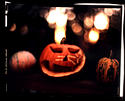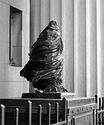ruilourosa
Member
i like to do photography and i developed my technique of developing film that suits my purposes. inspection development is a bit of a obscure science(to me hey), it worked and it does work nowadays (Atget and some folks here being the prove), but having no technical nor artistic reasons to do it, why do it? it´s like some guys that find d-76 better than id-11, or that rodinal should age, technique is a means in photography not an end . if you like to develop by inspection do it... if you like better a vintage rodinal use it... if i find that a way works better for me why yours have to be longer than mine? go on! the bike is yours! this is not hegelian dialectics. if you like buttercookies you should eat them, even if i dislike them
black and white in analog form is practical and a good way for me to do my things and yes the end results could be a art form, but hell not the means. art (supposedly) is the final object, not your exposure and development, that is a technique, and if you feel an artist doing development by inspection i rest my case here.
do whatever you people like and find practical, these are just opinions...
black and white in analog form is practical and a good way for me to do my things and yes the end results could be a art form, but hell not the means. art (supposedly) is the final object, not your exposure and development, that is a technique, and if you feel an artist doing development by inspection i rest my case here.
do whatever you people like and find practical, these are just opinions...





